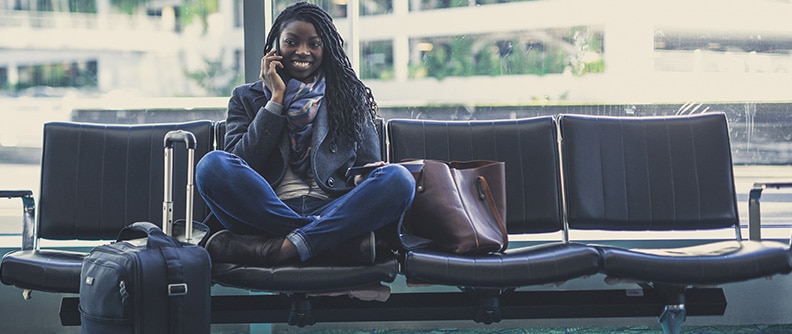Planning ahead for travel? Paying attention to these details will help you avoid hiccups and delays. These tips can help you have a worry-free trip.
Think it through
- How you’ll be traveling – Planes? Trains? Cars? A cruise?
- How far you’re going – A day trip? A long weekend? A few weeks? A whole season?
- What your trip schedule looks like – Crossing 3 or more time zones in one day? Irregular mealtimes? Late nights? Early mornings?
- What your activity level will be – Walking tours? Hiking? Skiing? Long car or bus rides? Lounging poolside?
- What you’ll need and want to eat or drink – Available groceries? Emergency snacks? Dining out? Alcohol? Water?
- Where you’re going – Cities? Rural areas? The tropics? Camping? The desert?
- When you’ll be traveling – The heat of summer? Winter? During high travel season?
You can do it all – with a little planning!
Tips for a safe trip
Ask for a Kaiser Permanente Travel Guide.
- Call Member Services at 1-800-464-4000 (TTY: 711), available 24/7 (except major holidays).
- The Travel Guide helps you map out available medical care locations for your trip.
Pack more supplies than you need.
- To be safe, take enough medications and supplies for double the amount of time you expect to be away.
- Make a list of all your supplies so you don’t forget anything.
- Order plenty of refills well ahead of your trip so they arrive in time for when you’re leaving.
- Include an empty plastic soda or water bottle as your travel sharps container.
- If there’s a possibility that you may run out of anything, bring extra prescriptions from your doctor. Be aware, other countries may not carry exactly what you’re used to using.
Protect your diabetes medications and supplies from extreme heat or cold.
- However you travel, keep your medications and supplies at the same consistent, moderate temperature you do at home.
- A thermos or cooler works well to keep insulin at a stable temperature.
- Never allow your insulin to freeze. Don’t leave your insulin in freezing weather and take care not to store it in a cooler touching the ice.
- Never leave your supplies in a hot or cold car.
Keep those around you informed, from your fellow travelers to tour guides and interpreters. Expect Customs and security screeners to ask about your supplies.
- Wear a medical alert bracelet.
- Bring a letter from your doctor that includes lists of:
- The medications and supplies you need to keep with you as you travel.
- Your devices that shouldn’t be X-rayed and need to be checked by hand (such as insulin pumps).
- Keep your medication in their original bottle with the prescription information. Keep over-the-counter medication in the original package.
- Keep the following items where you can easily find them:
- Your medical insurance card.
- A list of emergency contact phone numbers.
- A list of your medications and allergies.
Always pack your medications and supplies in your carry-on bag.
- Checked luggage isn’t handy when you need your fast-acting glucose tablets. Also, lost luggage can take a long time to be found.
If you need to take insulin on a flight:
- When preparing an injection, adjust for cabin pressure. Start by putting only half as much air as normal into the insulin bottle. If you have trouble getting the insulin out, it is ok to add more and try again.
- Insulin pumps may work differently in flight. Also, according to federal aviation regulations, their use may also be limited the same as other electronics. If you cannot use your insulin pump, you may need to inject the insulin during your flight as directed by your care team.
Eat healthy on the road.
- Pack your own snacks and look up restaurant menus online to plan for healthy choices.
Stick to your eating and medication routine.
- Remember to adjust your eating schedule if you change time zones.
- On road trips, particularly with long driving days, build your travel schedule around your meal and medication routine.
- If you’re doing the driving, make sure you’ve got what you need to recover from low blood sugar.
Check your levels often and be prepared to treat low blood sugar.
- Just the unusual activity and schedules involved in traveling can affect your blood sugar.
Get needed vaccinations and immunizations before you travel – especially if you’re traveling internationally, taking a cruise, or going on a group tour.
- Get your shots at least 3 or 4 weeks before your trip. (Remember that vaccinations can raise your blood sugar for a short time.)
Pack a language phrasebook in case you need to explain your diabetes or related needs.
- Write down or highlight key phrases and share them with your fellow travelers in case you need their help.
